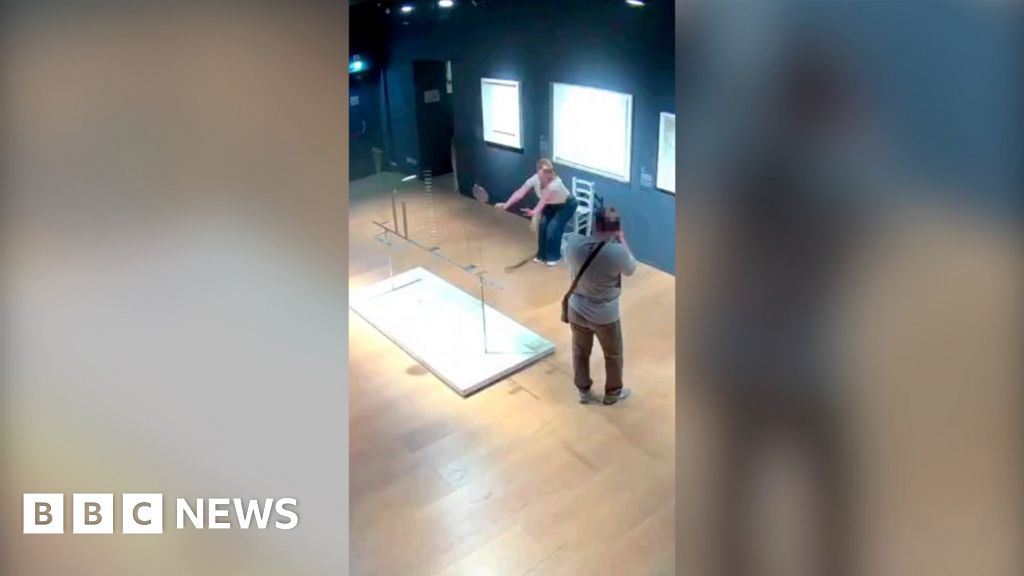What Happened
Recently, an incident occurred at the Palazzo Maffei museum in Verona, Italy, involving a piece of artwork known as the “Van Gogh” chair, created by Italian artist Nicola Bolla. The chair, which is adorned with thousands of Swarovski crystals, was damaged when a tourist sat on it while posing for a photograph. CCTV footage captured the moment the chair collapsed under the weight of the individual, leading to significant damage to the artwork. Following the incident, the tourists quickly left the scene, prompting public outrage and condemnation from the museum.
The museum later reported that, despite initial concerns about the extent of the damage, the chair was successfully restored to its original condition within a few days. The museum expressed gratitude to the police and restoration team for their efforts in salvaging the artwork. However, it remains unclear whether the tourists will face any financial repercussions for the damage caused.
Key Details
- Incident Date: The incident occurred recently, with reports surfacing on June 13, 2025.
- Location: Palazzo Maffei museum, Verona, Italy.
- Artwork: The “Van Gogh” chair, created by Nicola Bolla, is a delicate piece covered in thousands of Swarovski crystals, inspired by a chair depicted in one of Vincent van Gogh’s famous paintings.
- Damage: The chair was shattered when a male tourist sat on it, ignoring the delicate nature of the artwork. The woman accompanying him pretended to sit but did not actually apply weight to the chair.
- Restoration: The museum managed to restore the chair shortly after the incident, although the costs associated with the restoration have not been disclosed.
- Public Reaction: The museum condemned the tourists’ actions as “superficial” and “disrespectful,” and social media users expressed outrage, calling for accountability.
Multiple Perspectives
The incident has drawn a range of reactions from the public and art community. Many social media users criticized the tourists’ behavior, labeling it as ignorant and disrespectful to cultural heritage. Comments on social media included expressions of anger and disappointment, with some users calling for the tourists to be reported and held accountable for their actions.
Conversely, some commentators have pointed out the broader issue of how art is often treated in public spaces, particularly by visitors who may prioritize social media exposure over respect for the artwork. This perspective suggests that the incident reflects a growing trend where individuals engage with art primarily for the purpose of sharing experiences online, rather than appreciating the cultural significance of the pieces.
The museum’s response highlights a commitment to preserving art and cultural heritage, emphasizing the need for visitors to adhere to guidelines that protect delicate installations. The museum’s condemnation of the tourists’ actions serves as a reminder of the responsibilities that come with engaging with art.
Context & Background
Art installations like the “Van Gogh” chair often serve as focal points in museums, attracting visitors who may be eager to capture unique photographs for social media. This incident underscores ongoing discussions about the relationship between art, tourism, and social media culture. Museums and galleries frequently implement rules to protect their exhibits, yet incidents of damage due to visitor negligence or recklessness continue to occur.
The “Van Gogh” chair, specifically, is not just an artistic representation but also a commentary on the intersection of art and consumer culture. The use of Swarovski crystals adds a layer of fragility and luxury to the piece, making it particularly vulnerable to damage. This incident raises questions about the responsibilities of both institutions and visitors in preserving art.
What We Don’t Know Yet
While the museum has successfully restored the chair, details regarding the financial implications for the tourists involved remain unclear. It is uncertain whether the museum will pursue legal action or seek compensation for the damages incurred. Additionally, there is no information on whether the tourists have been identified or if they will face any consequences for their actions.
Furthermore, the incident has sparked a broader conversation about visitor behavior in museums and how institutions can better educate the public on respecting art. The effectiveness of current guidelines and the potential need for increased security measures or visitor education programs are topics that may arise in the wake of this incident.
In conclusion, the incident involving the “Van Gogh” chair serves as a cautionary tale about the intersection of art, tourism, and social media, highlighting the need for greater awareness and respect for cultural heritage among visitors.


